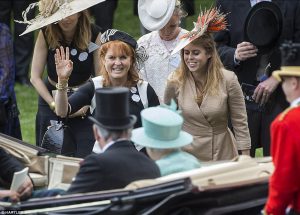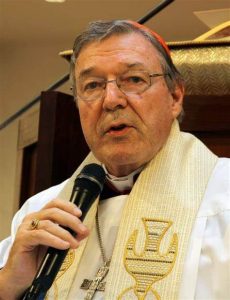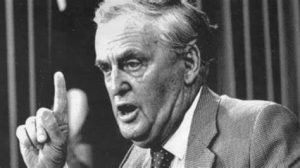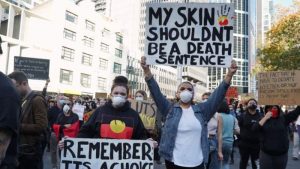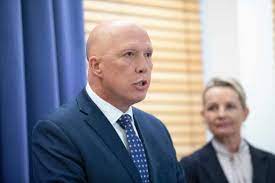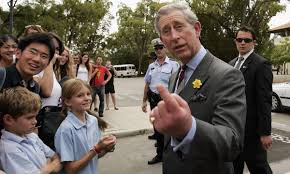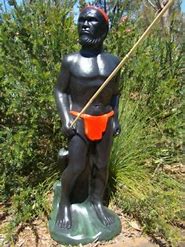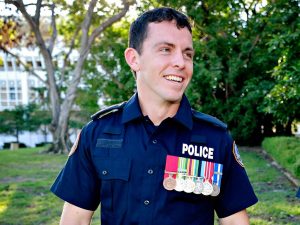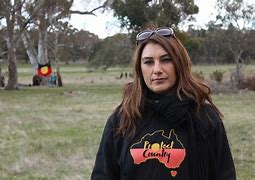Dear reader,
If anyone out there has noticed, we’ve had a Dickens of a time getting the computer to work.
Its an all round case of computer iliteracy. The space key is no longer working and it wont let us do apostrophes. So apologies for the absence of apostrophes on apostrophe and won’t. Its a clear case of Bishop Hollinworth-ism.
And its frustration personified. So bear with us, weve been delayed, but not daunted. The show must go on! And what a show it isn’t. Yes indeed more wisdom of the non Norman kind fromFrank. So without so much of a preamble this missive which was sent several weeks ago. the rest as they say; Is history. Thats history wityout apostrophe. Just as Hollingworth is without plausible excuse. Read on…
Hallo kameraden,
Jack Waterford has written an essay which absolutely nails the matter of the Referendum regarding the Voice to Parliament. I have no illusion I can match this erudite piece of prose, so without further ado, with Jack’s permission, I herewith rendered it in its entirety:
The shame of missing a national mood
Modern Anglo-Australians sometimes congratulate themselves about that moment in white Australia’s progress to semi-civilisation 56 years ago when Australian voters acknowledged Australia’s original inhabitants, and grudgingly allowed that they could be numbered among the Commonwealth’s inhabitants, and be the subject of Commonwealth legislation. The referendum that permitted this was passed by nearly 91 per cent of voters, the greatest proportion of the population ever to approve a referendum proposal. And as if to emphasise that this was more deliberate than exuberant, voters convincingly defeated another matter up for ballot – breaking the nexus between numbers in the House of Representatives and the senate.
Perhaps it bespoke a new maturity in the general population. About the same time, the White Australia policy was dropped by the Holt government, even if it took some time for the decision to have any practical effect. Abolishing the White Australia policy might not have succeeded at a referendum. More cosmopolitan members of the broader monoculture may have recognised that the policy damaged our image in Asia and at the United Nations. They may have recognised that the arguments used to justify it smacked of South Africa and Rhodesia, and the American South and shocked most of the people of Europe. It was increasingly impossible to justify, or be personally comfortable with, legal discrimination against 80 per cent of the world based on the colour of their skin.
Yet a significant proportion of the population – mostly, but by no means only, Labor-voting members of the working class –believed that the Australian standard of living, our good working conditions, and the nation’s political, social and cultural stability were a result of determined efforts to exclude Asians, Africans, African-Americans and most South Americans from our population. Gough Whitlam may have helped lead Labor from this wilderness; his instincts were bitterly opposed by Arthur Calwell, his predecessor, and leading frontbencher Fred Daly.
At the time of the 1967 referendum prime minister Anthony Albanese was four years old. His predecessor, Scott Morrison, was a year away from being born. Both grew up in very different societies, as did most Australians, local or foreign-born. Only about three in 10 Australians was alive at the time of the 1967 referendum, and only about half of these would have any recollection of it.
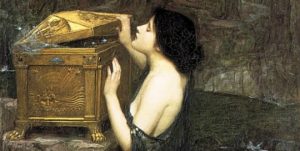
Take it from Pandora, this Voice thing might be dangerous if let out of the box! It might give rise to a national state of IMAGINATION!
Only older Australians seem to want to maintain hostilities against
Aboriginal Australians.
In the general Australian population, opposition to the Voice proposal is likely to be concentrated among those who were alive in 1967. They may prove to be the only age-group which, by majority, votes no. The younger the voter, the more likely they are to vote yes and to see the Voice as a further step in the reconciliation of non-Aboriginal Australians with the people of the first nations. The more likely too that such voters will see the adoption of the referendum proposal as a national coming of age, not only an embrace and incorporation of indigenous history, culture and society into Australia’s own sense of itself, but as a mark of our national self-confidence in our dealings with the world. Indigenous disadvantage has long been a stick with which other nations have been able to beat us. Many in the younger half of the population are puzzled and somewhat outraged by the reluctance of older folk, particularly men, to “get over” 1950s attitudes to Aboriginal Australians. Likewise, most people born outside Australia – even older ones – are less likely to be hostile to Aboriginal aspirations than older Anglo-Irish men.
I can remember 1967, and some of the cautious optimism about Aboriginal affairs that the overwhelming yes vote brought. It was a long time locally before much change occurred, but few doubted that the wider Australia had declared that things must. The first significant changes occurred from about 1973, during the Whitlam government. But many of the advances seemed to be accompanied by retreats that were greeted with satisfaction in the populations where rural Aborigines lived. The composition of that population has changed over time, as have attitudes among the younger members of that population. But there are rich veins of antipathy able to be mined.
I can never forget that in the rural part of Australia where I grew up, a majority of the people voted no.
That did not, of itself, reflect that natural conservatism Australians are supposed to exhibit whenever anyone wants to make changes to the constitution. It reflected an active hostility to Aborigines, to Aboriginal interests, and to any notion that the collective advancement of Aborigines could involve any perceived cost or disadvantage to the local white population. I would have said that this was a social hostility at this time more manifest among the “townies” rather than the farmers and pastoralists of the area. Many of the latter, in days before they had been whipped up into a frenzy with fear of land rights and native title, could afford to be somewhat more liberal about the fate of a casual labour force the demand for which was falling. But others might say sardonically that the reason farmers and graziers could afford such neutrality was because their grandfathers and great grandfathers had arranged the “clearing” of their holdings, and, later, the exile of any remnant populations to the fringes of local towns. Not really their problem anymore.
Australia’s Jim Crow era is not of the ancient past. Many of us remember it well.
Meanwhile, most indigenous people in these areas lived on “missions” and settlements, many still in metre-high lean-tos constructed of flattened-out kerosine tins, cardboard boxes and bits of tin scavenged from the (usually nearby) tips. Most indigenous children were not allowed into the local government schools, although that situation was gradually changing and had been reversed by 1970. The children had not been excluded on openly racist grounds, but because the townsfolk had objected to their children attending school alongside children with obvious pus coming from ears and noses. At least until the 1964 Freedom Rides (and in most cases for a year or two afterwards) Aboriginal children were excluded from local swimming pools. In many towns, police enforced a curfew from dusk to dawn on Aboriginal presence in town areas. Australia had a Jim Crow system every bit as bad as in the American South.
I was born in a hospital where Aboriginal women gave birth to babies, or were treated when sick, on the hospital veranda, not in the wards. The Aboriginal infant mortality in the area was about 250 per 1000 one in every four babies died before reaching the age of one. That death rate was about the same as in Central Australia. But in the Centre, most indigenous people were living far more traditionally, and, at that stage, without much access to wages or material goods, let alone any sort of proximity to health and education services. The shaming feature of much of western NSW was that such services existed and were notionally open to Aboriginal use. Some services “the welfare”, for example waged a war of terror, aided by the police and the judicial system, against Indigenous families, as well as indigent whites. Children seized by welfare were rarely returned to their communities.
But living conditions, morbidity and mortality told the real story. Just as shamingly, the frank racism and marked disadvantage did not seem to make many in the local population uneasy; they were quite happy as things were. Nor were the local politicians much engaged in promoting any programs of Aboriginal advancement; generally, most local agitation, if any, came from the odd clergyman, teacher or other busy-body ring-ins. Such people were, as far as possible, generally ostracised, especially by power centres in the community such as the RSL. I am proud to say that my father, a grazier, was one of the local do-gooders. So was his father and some of his siblings.
If ever, in those days, I expressed any reproach or feeling of shame to others from the area for the district’s no vote at the referendum, I was smugly reminded that most Australians had never seen an Aboriginal, and had voted from naïve idealism. It could be said that the more likely it was that people lived in the vicinity of Aboriginal Australians, the more likely it was that they, from their experience, would vote no. Most people would disavow complete antipathy to Aborigines. They would grudgingly admit that some individuals, and some families, were respectable and admirable citizens. That did not prevent racist generalisations, open discrimination in local shops and services, and a general belief that the disadvantage of Aborigines was their own fault, for failing to adopt the habits and the manners of white Australians.
Many in the community confidently expected that any initiatives would be a waste of money, and that ameliorative measures, anti-discrimination laws, legal aid—would change nothing. Police hotly resented any controls or discipline over the way they “managed” their local Aboriginal “problem.” Country folk deeply resented the disapproval of city-folk and do-gooders, and believed they had no idea of the nature of the “problem.” Curiously, much of the alleged fecklessness, ignorance and “no-hoperdom” attributed to Aborigines had, only a century or so before been attributed to the local Irish. Some of these now trotted out the very discriminatory generalisations that had once been used to justify their being held back from full participation in the wider society.
I’d like to say that we are past all that now. .Certainly we now live in a society where most citizens would not, and a few citizens dare not, express the racist and discriminatory feelings that were once so common in those parts.
Across the nation living conditions have improved considerably, and, in most communities, Aborigines now live in the towns and the cities, if all too often in over-crowded housing. There is a full panoply of anti-discrimination legislation, and, in many areas a strong sense of civic partnership that no longer routinely excludes the Aboriginal citizens making up a significant proportion of the towns.
But we are still a long way from a picture in which the local indigenous community are not instantly distinguishable by being the most obviously disadvantaged by health, housing and educational status, by income and job security, and by almost every imaginable form of social or economic capital accumulation. It is trite to say that much of that disadvantage is a consequence of the bad bits of European settlement, including old policies of dispersal, dispossession and conscious pauperisation. What has yet to be properly acknowledged is how much of the current disadvantage comes from the recent as much as the distant past. And how much of its continuance has been because of the active resistance of a proportion of the population who see themselves as disadvantaged whenever there is any effort to improve the lot of the first Australians.
The case for yes is an emotional one. But it’s positive and yearns for a brand new day. The case for no is resentful, and won’t drop the grudge.
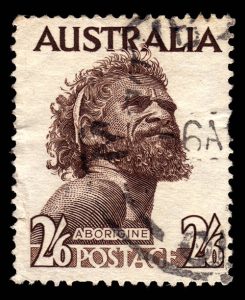
Even on stamps and coins they, ( First Australians) have made significant steps toward RECOGNITION. None of which is TOKEN!
Pauline Hanson regularly expresses this resentment and resistance, sometimes cunningly with her claim that she dares to say what others are thinking. The National Party has had a long tradition of resisting change, but in more recent times has become more progressive as it has recognised that many of its human constituencies (that is other than the coal and gas industry) have progressive views on human rights, the environment and policies of inclusion rather than polarisation. So far, its decision to campaign against the Voice has not sought to pander to active hostility to Aborigines, other than through its traditional law and order focus.
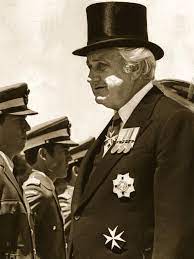
Guided always by a benign and guiding hand invested by HIS MAJESTY the KING to ensure we all live up to the notion of CIVILISATION!
But as the referendum campaign gathers speed one can expect that it will be pitching a them-versus-us line in its electorates. Claiming that all Australians should be subject to the same laws with no groups given any special status is a way station on the road to arguing that Aborigines are already getting advantages other Australians do not get. It used to be said in the American South that the secret of maintaining political power involved reminding poor whites that they were better off than blacks, and keeping their focus on the points of distinction so that they did not see who was benefiting from the disadvantage of both.
By 1967, Aborigines could vote in every part of Australia. But they did not have to, and there were only a few areas where there was a discernible indigenous vote. Now indigenous voters number about a third of the voters in many parts of rural NSW, and one might think that enough to guarantee a Yes vote. Yet in some rural NSW Aboriginal communities, some Aborigines will vote no. In those parts, I doubt that this is because of the cause fronted by Jacinta Nampijinpa Price, a personality of a type and with backers of a sort that many voters will recognise. It’s more likely that it’s the cry of exclusion and despair being pitched by senator Lidia Thorpe of Victoria. Some will do that because they fear that voting yes may end up compromising an ultimate sovereignty argument. Others feel that they have not personally or collectively benefited much from 50 years of Aboriginalprograms, and believe the money, and the initiative behind the Voice has gone to Aboriginal fat cats and will only increase their relative advantage. Some others will vote yes, but without much enthusiasm, if only because they dislike people associated with the No campaign more than those arguing for yes. At local levels in parts of rural NSW there is, so far, little momentum. And the idea that having a constitutionally-mandated Voice will transform the local situation is a hope, not a certain solution for all difficulties. There will never be a short cut away from politicking, arguing, rationing, making choices and having winners and losers. But it might be a fairer contest if Aboriginal opinion were to carry more weight and influence, and receive more respect.
Although traditional wisdom has it that referendums always fail if there is significant opposition from even one substantial group, I think that the same-sex marriage plebiscite suggests new possibilities for constitutional referendum questions containing a considerable moral and emotional appeal. Particularly when it is pitched at the idea of closure of old hatreds, hostilities and resentments, promise of a more inclusive and cooperative future, and realisation that recognition promotes equality before the law. Far from raising one group unfairly above others, a Yes vote may help create a level playing field. But I still dread the prospect that in some of the old battlegrounds there is still a mood for conflict rather than peace. There are pockets of the land where there are people right out of touch and sympathy with the national mood.
https://www.youtube.com/watch?v=LYLKGIf68So
Are you the one who’s gonna stand up and be counted?
Jack’s presentation is nicely self-contained. I am loath to add to it, but can’t contain myself when responding to our own Mr. Potato Head with his demand for more detail. Rather disingenuous me thinks. Talk about the goose and the gander and the pot and the kettle. How much detail were we given about Morrison’s underwater wet dream? What Minister was he acting as when he cobbled AUKUS together? Can we please see the advice the then Attorney General was given?
As for Albanese’s counter attack, also disingenuous. He should leave such gratuitous undignified criticism of the naysayers to people like me.
Tot we elkaar weer ontmoeten,
Frenk

